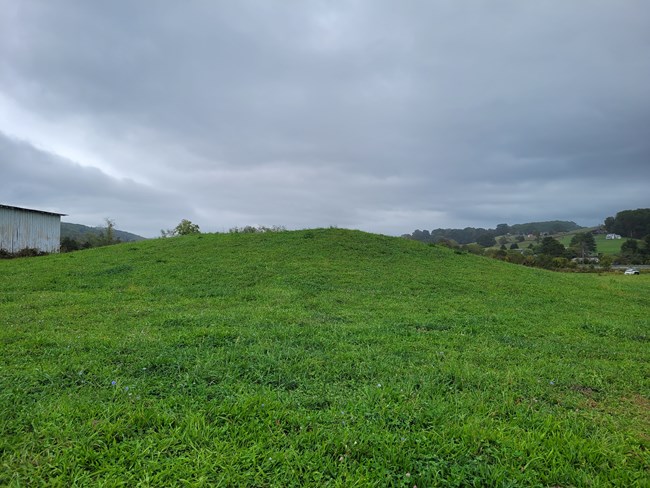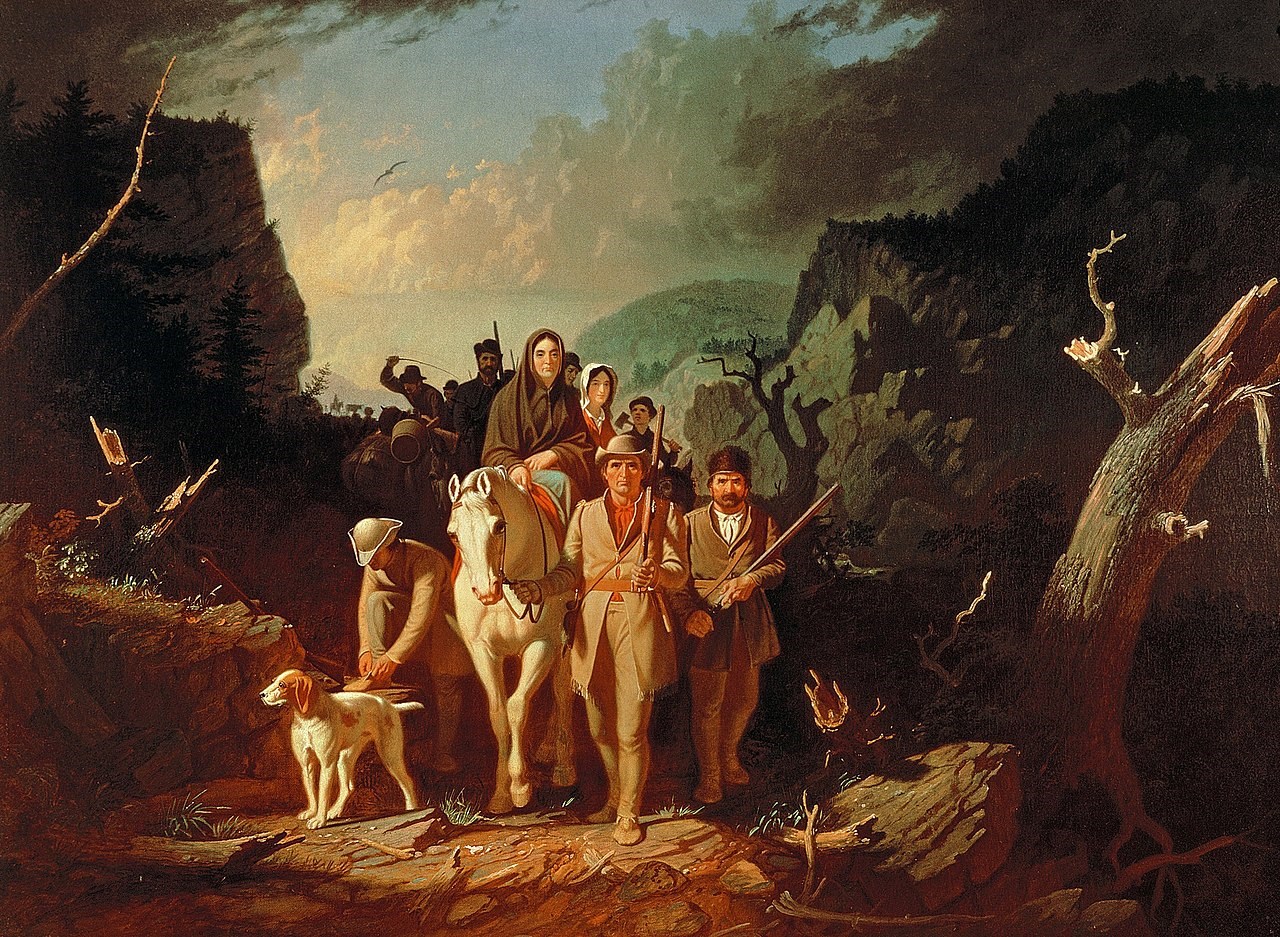
NPS Photo Formation of the GapFor thousands of years, many people and animals have journeyed through the Cumberland Gap. A combination of factors made this critically important transportation link possible. As the Cumberland Mountain formed, Yellow Creek cut through the mountain creating a notch in the mountain at the same time as it was rising. The mountain began to rise faster than the creek could erode, causing the creek to change course. Thus, the Gap that the early Americans found was dry. 
NPS Photo First People in the GapWhile we don’t know when the first people journeyed through the gap, humans lived in this area as early as 8000 thousand years ago. Archaeologists have found fragments of a steatite stone vessel that dates between 2000-4000 BCE, and Archaic projectile points are common in the region. Other people moved from the west through the gap. These people known as the Mississippian people built large mounds in Lee County, Virginia around 1200 CE. In these mounds, archaeologists have found trade goods that show evidence of a larger trade network that went through the gap to the west and south. Their descendants continued to live near the gap and included the Cherokee, Shawnee, and Creek. These tribes used the gap for hunting, trade, and settlement. As European colonists began moving through the gap, they clashed with many of these people over this tribal land. Eventually, they pushed these people out as they settled west of the gap.

Kemper Art Museum European Colonists journey through the GapDuring the 1700s, European colonists searched for a way west through the Cumberland Mountains. The first European to document his journey through the gap was Thomas Walker. In 1750, the Virginia Loyal Land Company sent Thomas Walker to find a pass into western Virginia (now Kentucky). Walker journeyed through the gap and named the mountain after Prince William, the Duke of Cumberland. Walker, though, argued the gap was not the best path westward. Nineteen years later, Daniel Boone came to a different conclusion. Boone heard about the gap from a friend and traveled through it on a hunting expedition. He told others of his journey and in 1775 land speculator Richard Henderson paid him to blaze a trail through the gap for settlement. This path known as the Wilderness Road allowed approximately 200,000 and 300,000 European-American colonists to travel through the gap westward.The painting above, though, very much artistic license, depicts a mythical image of manifest destiny. This idea argued that God destined all the lands from the Atlantic to the Pacific to the United States. |
Last updated: December 4, 2024
